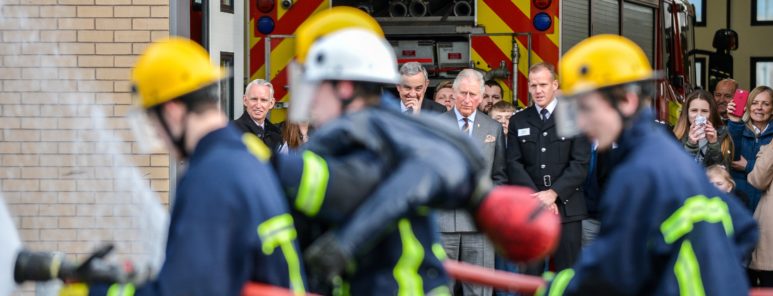South Yorkshire’s fire service has published details of 50 ways it is working with other blue light services to save time, cut costs and deliver a better service to the public.
South Yorkshire Fire & Rescue has unveiled the list to show local people the ways in which it is working more closely with the region’s 999 services, from training and community safety work, to shared teams, equipment and buildings.
50 Ways We’re Collaborating
Highlights of its collaborative work with South Yorkshire Police include a joint community safety department, shared police and fire station in Maltby and more than 1,500 hours of training that’s been jointly delivered to over 500 members of staff.
It’s also working with Yorkshire Ambulance Service and neighbouring fire and rescue services on everything from drones and operational learning, to buying cutting gear and fire kit.
The Policing & Crime Act 2017 placed a new statutory duty on all three emergency services to look at opportunities to work with one another better to improve efficiency and effectiveness.
The bulk of the collaborative work undertaken by SYFR both before and after the Act came into force involves South Yorkshire Police, although the fire service says it is also working closely with the ambulance service and other local fire and rescue services.
SYFR Deputy Chief Fire Officer Alex Johnson, said: “The benefits of collaboration with the police, ambulance and other fire services have always been about more than saving money. For us, it’s about delivering the best service we possibly can to the people we serve. Whilst we still believe each of the emergency services should retain their own unique skills, brand and specialisms, we want to show local people that we are serious about putting them first and providing them with the most efficient and most effective service possible.”
South Yorkshire Police’s Deputy Chief Constable Mark Roberts, said: “We welcome every opportunity to work with our blue light partners to achieve greater impact and realise efficiencies for the tax payer. Whilst it is essential we continue to focus on our specialist areas of work, there are areas in which we can collaborate to achieve a more effective and efficient service.”
Fire Authority Chair Cllr Robert Taylor, said: “It is fair to say that historically the individual services, other than at emergency incidents, have operated mainly in isolation. There are of course positive examples of previous joint-working but true collaboration has been resisted partially through the fear of a loss of individual identity. To some extent necessity has enabled services to look at collaboration through fresh eyes and outside of the financial considerations there’s a realization that by working together, the services we offer to the public and the ways we function can be greatly improved.”
Dr Alan Billings, South Yorkshire Police and Crime Commissioner said: “The collaborative work between South Yorkshire’s Fire and Rescue Service and the Police precedes my time as Police and Crime Commissioner. But I have sought to move that on at pace by chairing a joint collaboration board which has overseen much of that work. As a result I think we can demonstrate both greater effectiveness and greater efficiency, including cashable savings. It is not easy bringing two very different organisations together. They have different cultures and histories. But we are showing that we can work well together if we put the interests of the people we seek to serve first.”
A new strategy outlining South Yorkshire Fire & Rescue’s approach to collaboration will be published next month.

